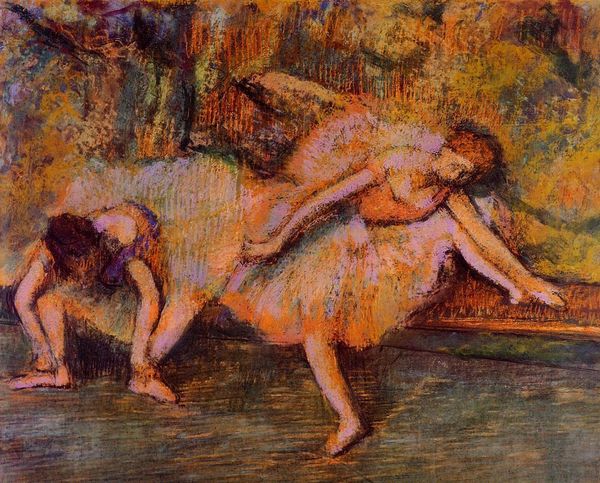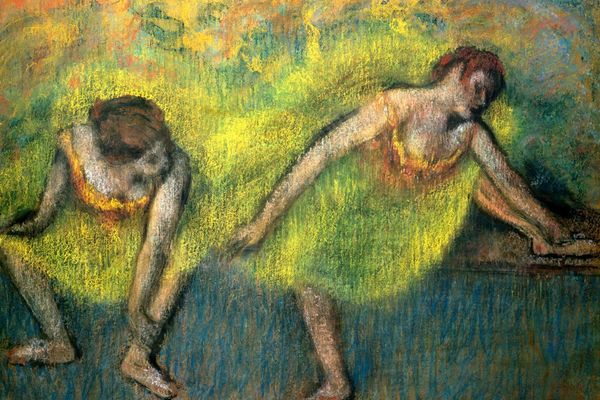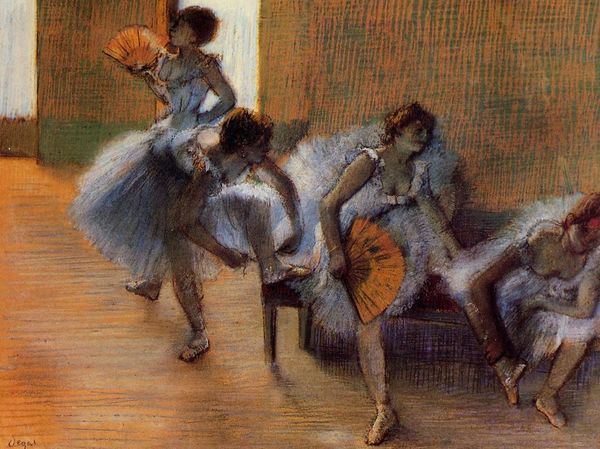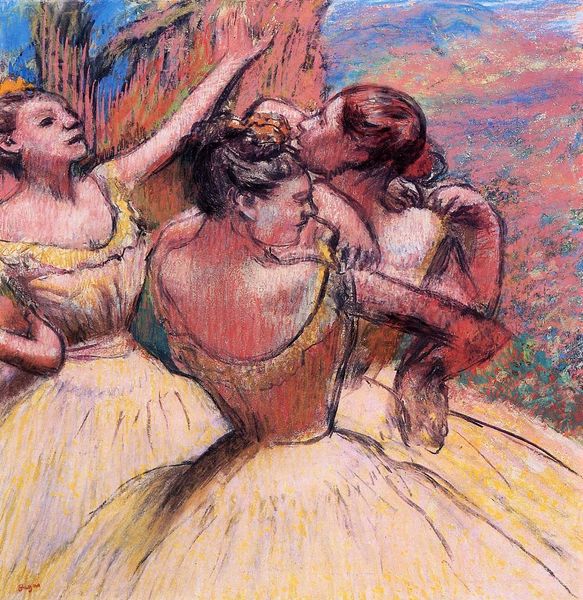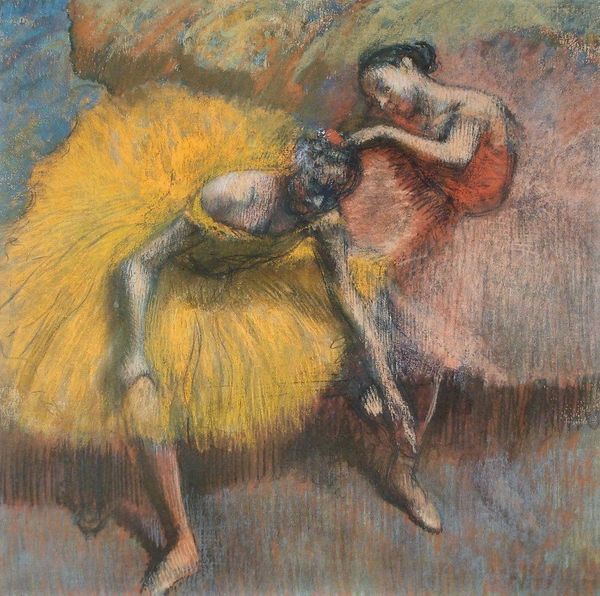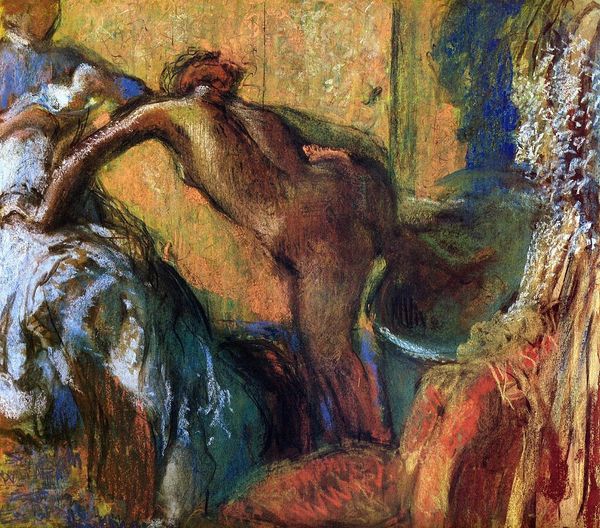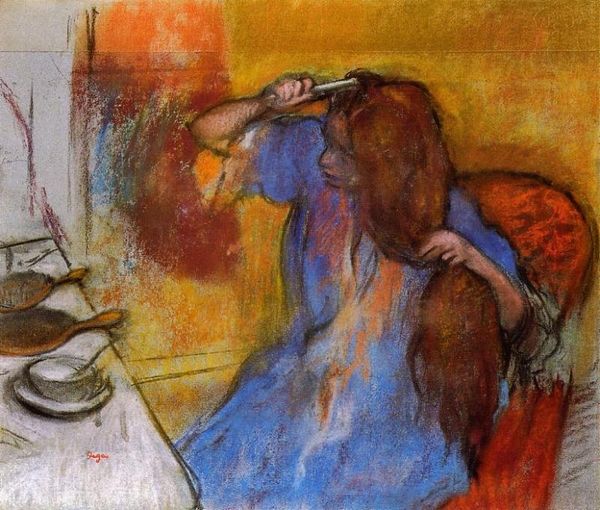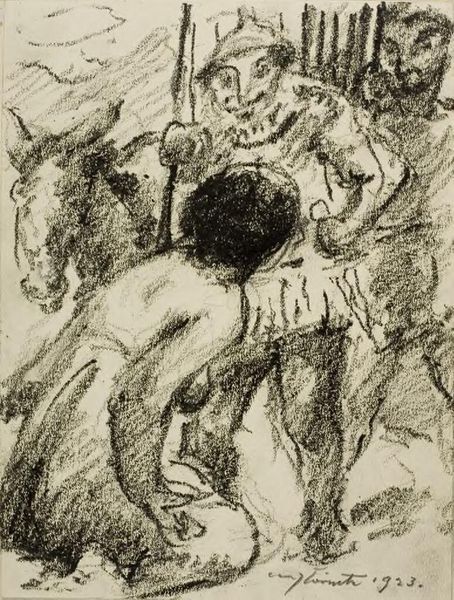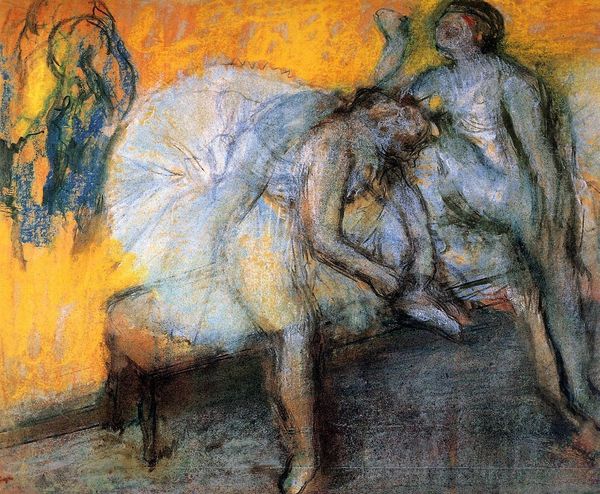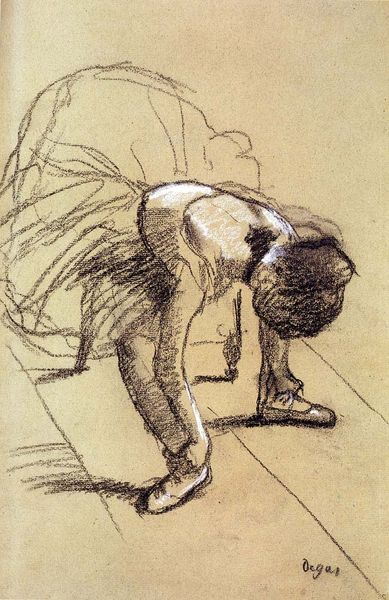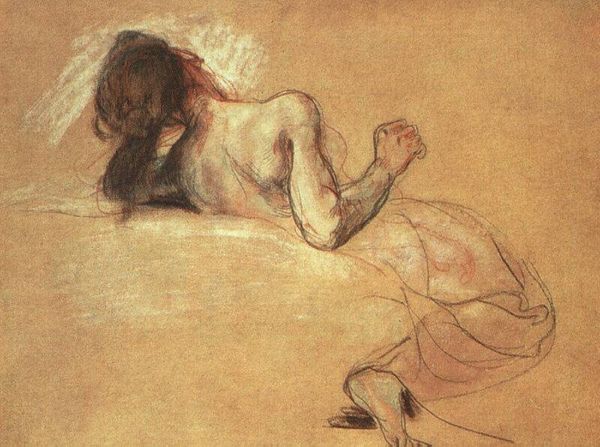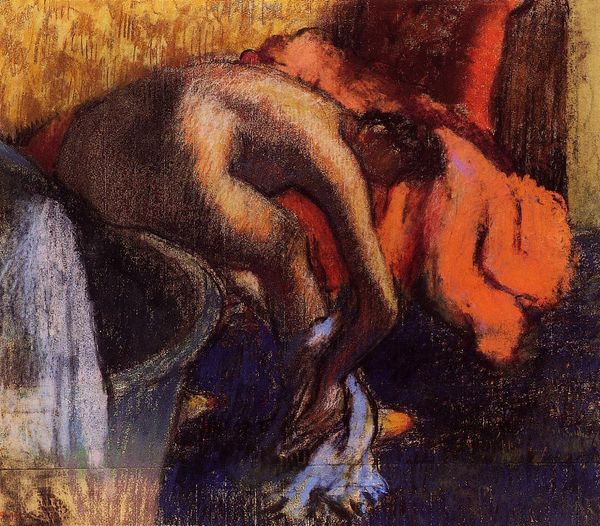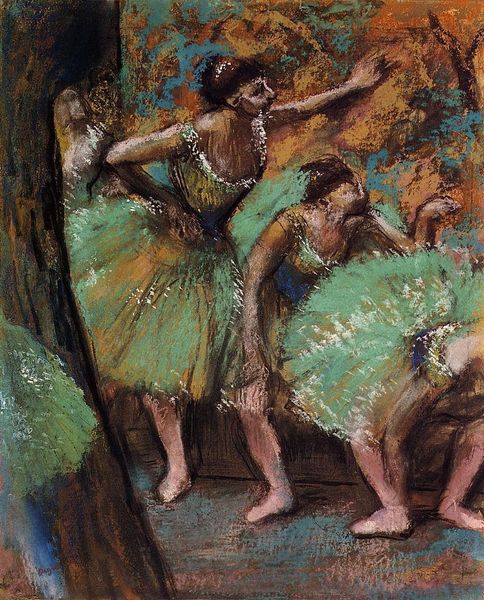
Dimensions: 80 x 104.5 cm
Copyright: Public domain
Editor: This is "Two Dancers Resting" by Edgar Degas, created around 1896, using pastel and charcoal. It's a study of two figures in motion or rather, in the pause after motion. There's something very intimate and yet detached about it, and the pastels lend a certain softness, despite the sharp lines of their limbs. What strikes you when you look at this work? Curator: Ah, Degas! A master of capturing the ephemeral. What I see here isn't just a portrait, it’s a slice of life, a captured breath. Those smudged lines, that almost unfinished quality… it invites us into their private world. It's less about idealizing the dancers, more about seeing the sheer physical effort, the slight awkwardness of exhausted bodies. It reminds me of snapshots – real and intimate, not posed. Tell me, what feelings do the figures evoke? Editor: Definitely fatigue, but also a kind of camaraderie. They seem to be sharing a quiet moment. I'm curious about the visible marks, almost like speed lines around their figures. Curator: Exactly! Those lines, seemingly haphazard, are deliberate. Degas is almost teasing us – suggesting movement even in stillness. Think of it like this: he's showing us the echo of their dance, the lingering energy. The off-kilter composition adds to that feeling, doesn't it? Editor: It does! It avoids any sense of the romanticism of ballet that I would have assumed. Curator: He’s looking at dancers like labourers or athletes at rest and not necessarily artists or ballerinas. Which perhaps explains that sense of realism you felt immediately! Editor: That makes so much sense. I originally saw rest and intimacy, and now, looking again, I'm spotting effort. Thank you. Curator: And I you! I will forever look for speed lines.
Comments
No comments
Be the first to comment and join the conversation on the ultimate creative platform.
